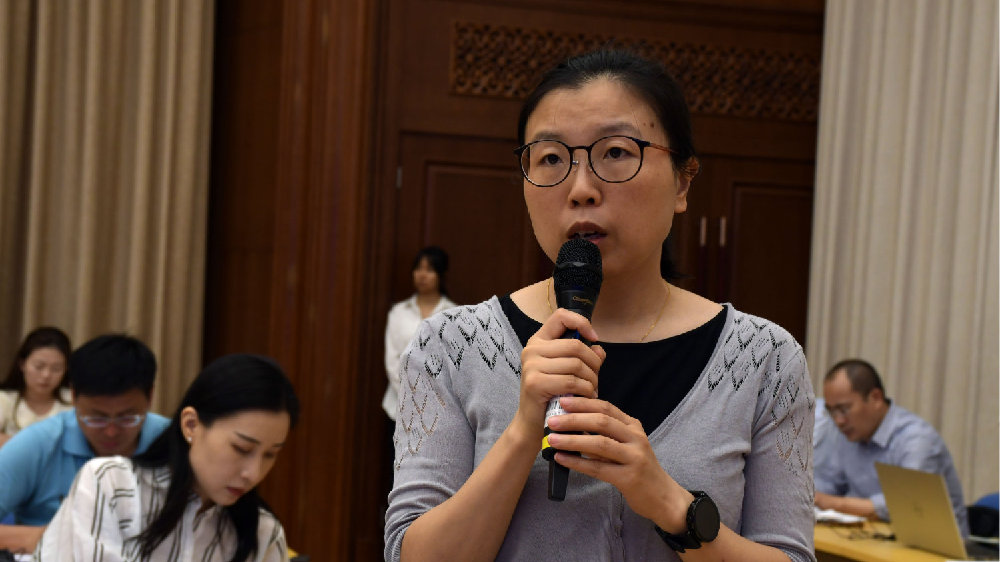Ministry of Ecology and Environment: The vitality of the national carbon market has steadily increased

On July 29, the Ministry of Ecology and Environment held a regular press conference in July. At the press conference, Pei Xiaofei, spokesperson of the Ministry of Ecology and Environment, answered reporters 'questions on the progress of my country's carbon market construction.
Pei Xiaofei introduced that the national carbon market is an important policy tool for using market mechanisms to control greenhouse gas emissions and achieve carbon peak and carbon neutrality goals. It includes two parts: the mandatory carbon emissions trading market and the voluntary greenhouse gas voluntary emission reduction trading market. The two markets, compulsory and voluntary, have their own focuses and operate independently, but also work in the same direction and complement each other, and are organically connected through a quota settlement and offset mechanism. In July 2021, the national carbon emissions trading market launched online trading. Currently, 2257 key emission units in the power generation industry are included, covering approximately 5.1 billion tons of carbon dioxide emissions annually, making it the world's largest carbon market covering greenhouse gas emissions. The national voluntary greenhouse gas emission reduction trading market was officially launched in January 2024. At present, the institutional framework system has been completed, and emission reduction projects and voluntary emission reductions are about to enter the window period for application for registration, encouraging companies in a wider range of industries to participate in carbon emission reduction actions. Over the past three years, the national mandatory carbon emissions trading market has successfully completed two compliance cycles and achieved the expected construction goals. Progress has mainly been made in the following four aspects:
First, a relatively complete institutional framework has been established. The State Council issued and implemented the "Interim Regulations on the Administration of Carbon Emissions Trading", and the Ministry of Ecology and Environment issued the "Measures for the Administration of Carbon Emissions Trading (Trial)" and three management rules for carbon emission rights registration, trading, and settlement, carbon emission accounting reports and verification guidelines, and quotas. Documents such as allocation plans have jointly formed a relatively complete carbon emissions trading system.
Second, an infrastructure support system of "one network, two institutions, and three platforms" has been built. "One Network" refers to the establishment of a "National Carbon Market Information Network" to centrally publish authoritative information on the national carbon market. The "two institutions" refer to the establishment of a national carbon emission rights registration agency and trading agency to conduct refined management of quota registration, issuance, settlement, and trading. The "three platforms" refer to the establishment and stable operation of the three major infrastructures of the national carbon emission rights registration system, trading system, and management platform, realizing the online management of the entire business, the centralization of full-process data, and the scientific comprehensive decision-making.
Third, carbon emission accounting and management capabilities have been significantly improved. Establish a long-term supervision mechanism for normalizing the quality of carbon emission data, optimize accounting and verification methods, implement monthly certificates for key emission data of enterprises, implement a three-level "national-province-city" joint review, and make full use of big data, blockchain and other information Technology intelligent early warning to eliminate hidden dangers of data problems. Innovate and establish a dynamic supervision mechanism for performance risks to urge enterprises to complete quota payments on time and in full. At present, enterprises have established internal control systems for carbon emission management, and their management level and accounting capabilities have been significantly improved.
Fourth, the vitality of the carbon market has steadily increased. As of the end of June 2024, the cumulative transaction volume of the national carbon emissions trading market was 465 million tons, with a transaction volume of approximately 27 billion yuan. The transaction scale has gradually expanded. The transaction volume and transaction volume in the second performance cycle have increased by 19% and 89% respectively compared with the first performance cycle. In addition, the enthusiasm of companies to participate in transactions in the second performance cycle has increased significantly. The companies participating in transactions accounted for 82% of the total, an increase of nearly 50% compared with the first performance cycle. At the same time, the overall carbon price showed a steady upward trend, rising from 48 yuan/ton at the start to the closing price of 91.6 yuan/ton on July 26, an increase of 90.8%.
In the next step, the Ministry of Ecology and Environment will adhere to the basic positioning of the national carbon market as a policy tool to control greenhouse gas emissions, continue to improve relevant supporting policies, expand industry coverage, release methodologies in more fields, enrich trading entities and products, explore and implement free and paid quota allocation methods, deepen international exchanges and cooperation in the carbon market, strive to build a more effective, more dynamic, and more internationally influential carbon market, and help achieve the goal of carbon peak and carbon neutrality. Make greater contributions to addressing global climate change.







